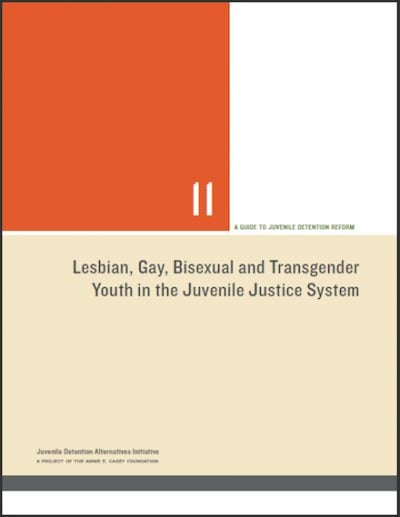A Greater Risk
Youth in detention and correctional settings who identify as lesbian, gay, bisexual or other report being sexually victimized by peers at a rate that is nearly 10 times higher than their heterosexual counterparts.

This guide highlights a wide range of best practices – everything from big picture improvements to frontline fixes – that juvenile justice facilities can implement to advance the safety and well-being of a particularly vulnerable population: Lesbian, gay, bisexual and transgender (LGBT) youth.
It is the eleventh installment in a series devoted to the Casey Foundation’s Juvenile Detention Alternatives Initiative (JDAI). A multi-year, multi-site project, JDAI aims to reduce reliance on secure confinement while championing more efficient and effective detention alternatives.
Relative to their peers, LGBT youth are more likely to experience physical, sexual and emotional abuse – particularly in secure settings. Understanding these risks and the signs of anti-LGBT bias are critical to ensuring that juvenile justice systems are set up to advance the safety and well-being of all youth.
We hope you'll find value in this report. We’d love to get a little information from you, which we'll use to notify you about relevant new resources.